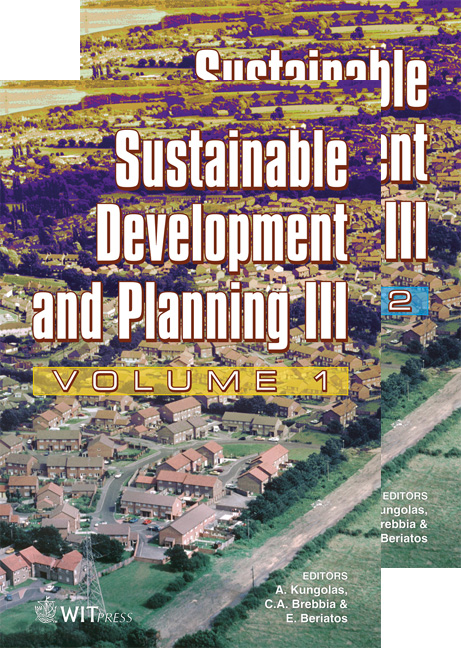Towards A Sustainable Spatial Planning And Development In Greek Islands And Highlands
Price
Free (open access)
Transaction
Volume
102
Pages
7
Published
2007
Size
805 kb
Paper DOI
10.2495/SDP070011
Copyright
WIT Press
Author(s)
E. Beriatos
Abstract
Highlands and islands are the underdeveloped and marginalized areas of Greece in which a series of crucial planning and development problems occur. The paper attempts a description of those areas not only in terms of physical spatial structure but also in terms of socio-economic dependence from the developed - ‘integrated’- regions of the country (urban and industrial areas). It is essential to describe the structural features of these areas in order to understand their true needs, so that efforts can be made towards the creation of a planning model, which will integrate these areas, using the benefits provided by new technologies. To this purpose the paper investigates an implementation example (pilot project), in the central Mediterranean Sea, which has been developed in the framework of EU trans-national cooperation programs, in the field of spatial and environmental planning matters in order to show that ITC advanced technologies can reinforce participatory planning processes in the new ‘network society’. Keywords: mountainous and island regions, participatory planning, tele-informatics, networks. 1 Introductory remark Based on its specific geomorphological characteristics, Greece is characterized by an internal intense spatial fragmentation and discontinuity, with a variety of highlands and islands. Greece, as indicated by various quantitative indicators, is the most mountainous country and at the same time the country with the largest number of islands in Europe, since there are even islands with significant mountainous areas. Nevertheless, Greece does not have until now an integrated policy aiming at the development of mountainous and island regions. The country’s geographic location places it on a ‘geographic crossroad’ but at
Keywords
mountainous and island regions, participatory planning, tele-informatics, networks.





